Confused about the right breaker size and wire gauge for your electric stove? Wiring matters when it comes to kitchen appliances.
In this guide, we’ll unravel the mystery and provide clear steps to ensure safety and efficiency in your kitchen. Say goodbye to doubts and cook with confidence.
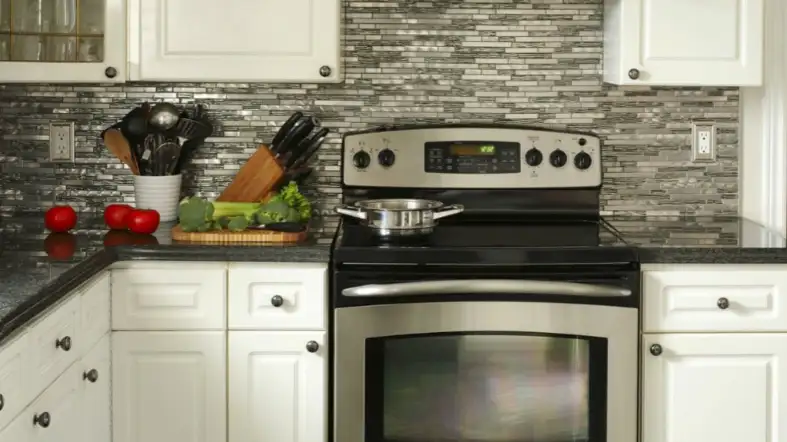
What Size Breaker For Electric Stove?
For most electric stoves, a 240-volt circuit with a 30-amp breaker and 10-gauge wire is suitable. Always check your stove’s wattage and follow electrical codes to ensure safety and proper operation.
Breaker size chart for electric stoves:
| Stove Type | Wattage (watts) | Breaker Size (amps) |
|---|---|---|
| Coil | 3000 – 5000 | 20 – 30 |
| Smooth-top | 4000 – 7000 | 30 – 40 |
| Induction | 5000 – 8000 | 40 – 50 |
>> What size fuse for hot water heater?
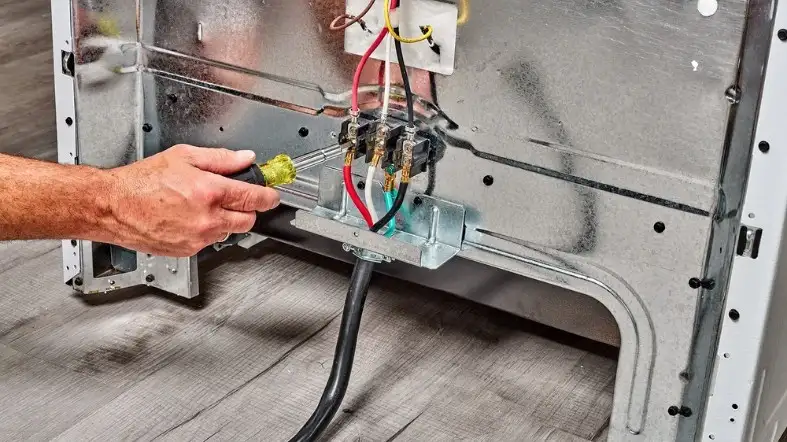
What Size Wire For The Electric Stove?
For most cases, #8 AWG copper wire is recommended for an electric stove. Always consult local electrical codes for precise requirements. The wire gauge depends on your stove’s current rating and the circuit length.
Wire gauge chart for electric stove:
| Breaker Size (amps) | Circuit Length (feet) | Wire Gauge (AWG) |
|---|---|---|
| 20 | Up to 100 | 12 |
| 20 | 100 – 150 | 10 |
| 30 | Up to 85 | 10 |
| 30 | 85 – 115 | 8 |
| 40 | Up to 70 | 8 |
| 40 | 70 – 95 | 6 |
| 50 | Up to 55 | 6 |
| 50 | 55 – 75 | 4 |
Factors to Consider
There are some factors that you need to consider when determining the breaker size and wire gauge for your electric stove. These are:
Stove wattage:
The higher the wattage of your electric stove, the more current it draws, and the larger the breaker size and wire gauge you need.
Circuit length:
The longer the circuit from the stove to the electrical panel, the more resistance there is in the wire, and the larger the wire gauge you need.
Local electrical codes and regulations:
These are the rules and standards that govern the installation and maintenance of electrical systems in your area.
They may vary depending on your location and type of building. You need to follow these codes and regulations to ensure safety and compliance.
How to Determine Stove Wattage?
To find out the wattage of your electric stove, you can do one of these methods:
Check the label:
Look for a label on the back or inside of your electric stove that tells you how many watts it consumes. It may also tell you the voltage and amperage of the appliance.
You can use these values to calculate the wattage using this formula:
Wattage (watts) = Voltage (volts) × Amperage (amps)
For example, if your electric stove has a voltage of 240 volts and an amperage of 25 amps, then the wattage is:
Wattage (watts) = 240 volts × 25 amps = 6000 watts
Use a watt meter:
A watt meter is a device that measures the power consumption of an appliance.
You can plug it into the outlet where your electric stove is connected and turn on the stove. The watt meter will display how many watts your stove is using.
>> What size wire for 50 amp 220v?
Calculating Circuit Length
Using a Tape Measure or Measuring Wheel
To determine the circuit length for your electric stove, you’ll need a tape measure or a measuring wheel, both available at hardware stores.
These tools help you measure distances accurately.
Path of the Wire
Remember, you’re measuring the path the wire takes, not a straight line. Follow the route the electrical wire follows from the stove to the electrical panel.
It may not be a direct line, so be prepared to navigate twists and turns.
Adding Extra Length
Don’t forget to account for bends, twists, and connections in the wire’s path. These can add extra length.
Imagine following the wire with your measuring tool, including all the nooks and crannies.
Example Measurement
Suppose your electric stove is in the kitchen, and your electrical panel is in the basement.
Measure from the stove to the nearest outlet, then from the outlet to the basement door, and finally from the basement door to the electrical panel.
Include all the curves and corners in your measurement.
>> What gauge wire for 220v ac unit?
Common Reasons for Electrical Stove Malfunctions
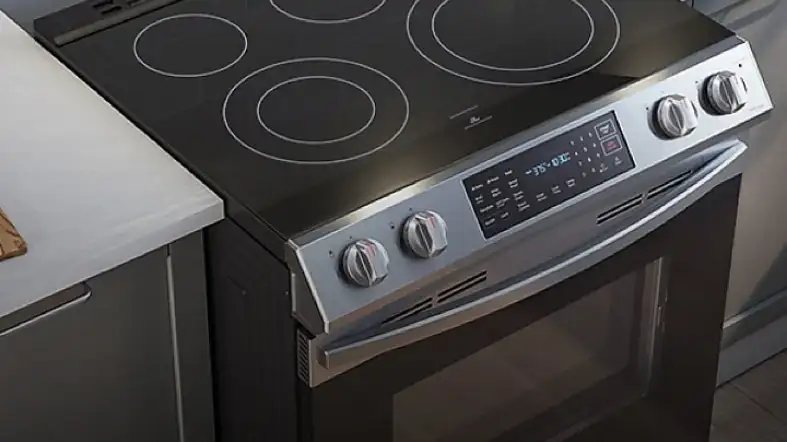
1. Faulty Heating Elements
Heating elements are vital components in an electric stove. Over time, they can wear out or develop defects, resulting in uneven heating or complete failure.
This issue can impact your cooking experience and food preparation.
2. Wiring Problems
Faulty wiring or loose connections can disrupt the flow of electricity in your stove.
It may lead to sporadic operation, power loss, or even safety hazards like electrical fires. Regular inspection of wiring is essential.
3. Temperature Control Issues
A malfunctioning thermostat or temperature sensor can cause your electric stove to heat inconsistently.
This can affect your ability to cook food at the desired temperature and may result in undercooked or burnt dishes.
>> What gauge wire for 200 amp service?
4. Power Supply Problems
Inadequate power supply, such as voltage fluctuations or circuit overloads, can strain your electric stove.
This can lead to performance issues, including slow heating or complete shutdown. Ensuring a stable power source is crucial.
5. Control Panel Malfunctions
The control panel of your electric stove, including knobs, buttons, or digital displays, can experience malfunctions.
This may hinder your ability to adjust settings accurately, impacting cooking precision.
6. Electrical Surges
Power surges caused by lightning or electrical grid disturbances can damage sensitive stove components.
Investing in surge protectors or disconnecting the stove during storms can prevent such damage.
7. Wear and Tear
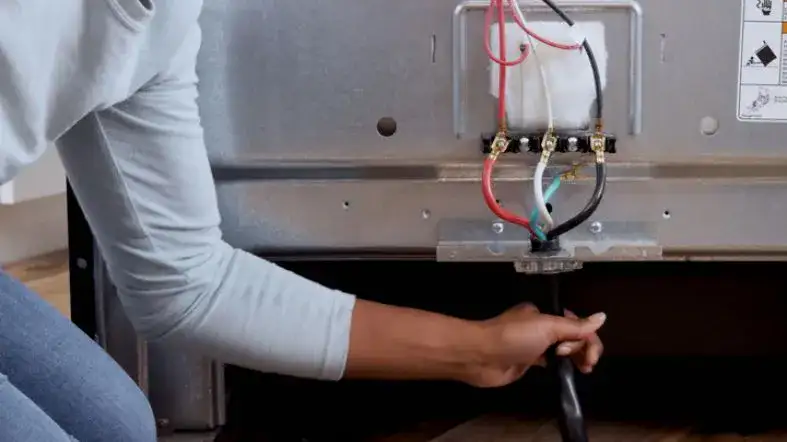
As with any appliance, regular wear and tear can take a toll on your electric stove.
Components like switches, fuses, and circuit boards can deteriorate over time, leading to operational issues.
8. User Error
Sometimes, issues arise due to user error, such as accidentally activating the stove’s child lock or timer functions.
Familiarizing yourself with the stove’s manual can help avoid unnecessary problems.
9. Environmental Factors
Your stove’s surroundings can influence its performance. Excessive heat, humidity, or exposure to water can damage electrical components.
Ensure your stove is placed in a suitable environment.
10. Pest Infestations
In rare cases, pests like rodents can infiltrate your stove’s wiring, causing damage. Regular pest control measures can prevent this issue.
>> What gauge wire to run 500 feet?
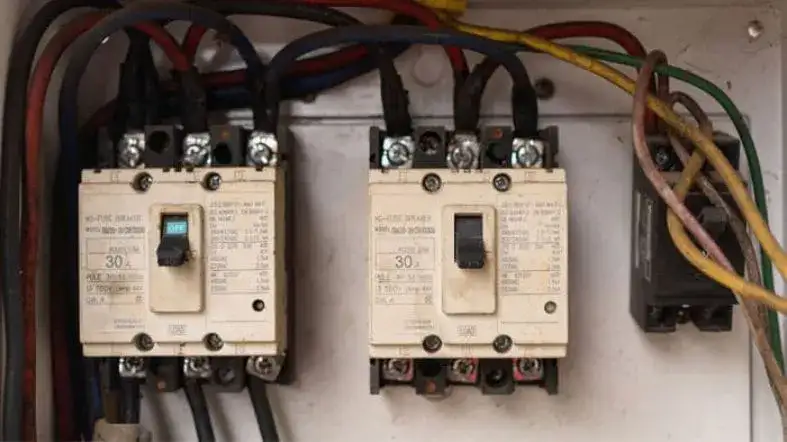
FAQs about breaker and wire for electric stove
Can I Use A 3 Wire On A 4 Wire Stove?
Yes. A 3-wire on a 4-wire range will fit side by side in the outlet, the burners, and the oven.
Can A 50 Amp Breaker Be Used With A 40 Amp Stove?
No. If you have the correct wire size for the stove and the same type of stove, you can use a 50 amp breaker, but you cannot use a 50 amp breaker on a 40 amp wire for a resistive load such as a stove.
What Type Of Wire Is Required For A 220 Stove?
A standard 220 Volt / 30 Amp electric dryer requires a cable with #10 copper conductors, while a 220 Volt / 40 Amp electric stove requires a cable with #6 aluminum conductors.
Can A 30 Amp Breaker Be Used For An Electric Stove?
As long as your electric stove’s amp demand is compatible with your installed circuit, a 30 amp breaker and the right wire size will not cause a broken circuit.
For a 30-amp circuit breaker, the ideal wire gauge is 10 gauge.
Can A 40 Amp Breaker Be Used With A 50 Amp Stove?
No, installing a 50A breaker on 40A wiring, which is not meant to withstand so much electricity, can cause a house fire.
Wrapping words
Now you clearly know what breaker and wire for the electric stove you need.
If you are familiar with stoves, industry standards, and the power requirements for a stove, selecting the correct circuit breaker is easy.
We hope that our given information will help you to pick the right ones. Never underestimate the amount of energy your range will consume.

